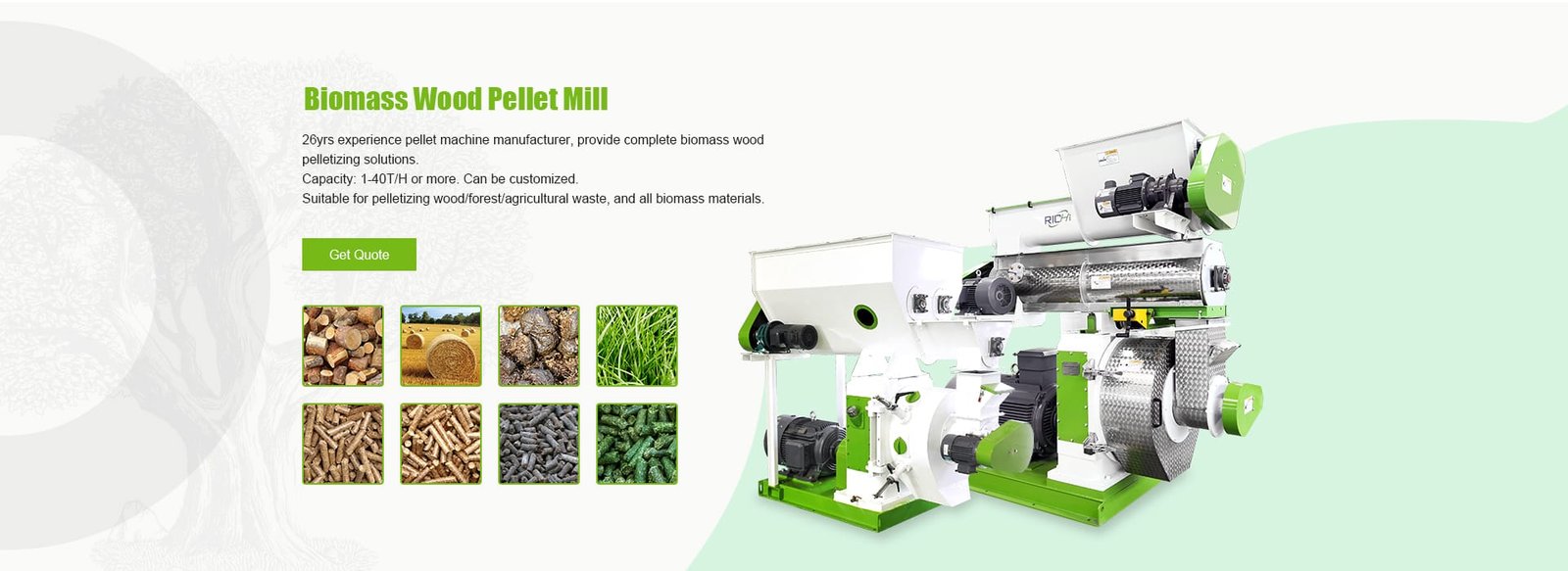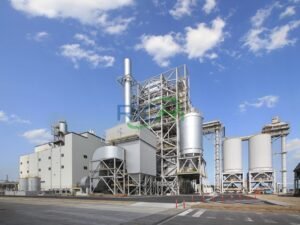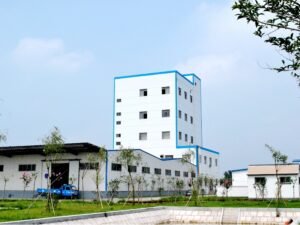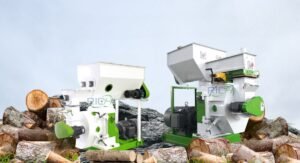
In the ever-growing landscape of renewable energy and sustainable manufacturing, wood pellets have emerged as a versatile and environmentally friendly fuel source. These dense, cylindrical pellets, made from compressed biomass materials such as wood waste, sawdust, and agricultural residues, offer a cost-effective and carbon-neutral alternative to traditional fossil fuels.
At the heart of every successful wood pellet production facility lies a crucial piece of equipment – the wood pelletizer machine. This specialized machine is responsible for transforming loose biomass feedstock into high-quality wood pellets, ensuring consistent product quality and efficient operations.
Choosing the right wood pelletizer machine for your pellet plant is a critical decision that can significantly impact the overall productivity, profitability, and sustainability of your operation. With a wide range of options available in the market, it’s essential to navigate the selection process carefully, considering various factors to ensure you make an informed choice that aligns with your specific requirements and long-term goals.
Related post:https://www.richipelletmachine.com/wood-pellet-machine-for-sale/
Assessing Your Production Requirements
Before delving into the selection process, it’s crucial to assess your production requirements and define your specific needs. Consider the following factors:
- Production Capacity: Determine the desired production capacity of your pellet plant based on your anticipated demand for wood pellets. Wood pelletizer machines are available in various sizes and configurations, ranging from small-scale units suitable for local or niche markets to large-scale industrial systems capable of producing thousands of tons of pellets per year.
- Feedstock Availability and Characteristics: Evaluate the availability and characteristics of the biomass feedstock you plan to use, such as wood waste, sawdust, or agricultural residues. Different feedstocks may require specific pre-treatment processes or have unique properties that influence the pelletizing process and the final product quality.
- Product Specifications: Define the desired specifications for your wood pellets, including size, density, moisture content, and any additional requirements based on your target market or end-use applications.
- Space and Infrastructure Constraints: Assess the available space and existing infrastructure at your pellet plant to accommodate the wood pelletizer machine and any necessary auxiliary equipment, such as feedstock handling systems, cooling and drying units, or packaging lines.
Key Factors to Consider When Choosing a Wood Pelletizer Machine
Once you have a clear understanding of your production requirements, consider the following factors when evaluating potential wood pelletizer machines:
- Pelletizing Technology: Wood pelletizer machines can employ different pelletizing technologies, such as ring die or flat die systems. Each technology has its own advantages and limitations in terms of production capacity, energy efficiency, and pellet quality. Evaluate which technology best suits your specific needs and feedstock characteristics.
- Energy Efficiency and Sustainability: Prioritize wood pelletizer machines that incorporate energy-efficient technologies and sustainable practices, such as waste heat recovery systems, variable frequency drives, or the ability to integrate renewable energy sources. These features can contribute to long-term cost savings and environmental responsibility.
- Automation and Control Systems: Assess the level of automation and control systems offered by the wood pelletizer machine. Advanced features, such as programmable logic controllers (PLCs), human-machine interfaces (HMIs), and remote monitoring capabilities, can improve process efficiency, consistency, and quality control.
- Maintenance and Support: Consider the manufacturer’s reputation for quality, after-sales support, and availability of spare parts and technical assistance. Proper maintenance and support are crucial for ensuring the longevity and optimal performance of the wood pelletizer machine.
- Integration and Scalability: If you plan to integrate the wood pelletizer machine into an existing production line or facility, evaluate its compatibility with your current systems and infrastructure. Additionally, consider the machine’s scalability and potential for future expansion or upgrades as your business grows.
- Regulatory Compliance: Ensure that the wood pelletizer machine complies with relevant local and international regulations, standards, and certifications related to emissions, safety, and environmental protection.
- Budget and Financing Options: Determine your budget for the wood pelletizer machine and explore potential financing options, such as leasing or loans, to spread the investment over a longer period. Consider the long-term return on investment and potential cost savings associated with increased efficiency and productivity.
Sourcing and Purchasing Strategies
Once you have identified your requirements and evaluated potential wood pelletizer machines, it’s time to explore sourcing and purchasing strategies. Here are some options to consider:
- Manufacturers and Suppliers: Reach out directly to manufacturers and suppliers specializing in wood pelletizer machines. Many offer online catalogs, product demonstrations, and knowledgeable sales representatives to guide you through the selection process.
- Industry Events and Trade Shows: Attend industry events, trade shows, and exhibitions where manufacturers and suppliers showcase their latest products and technologies. This allows you to see the machines in person, engage with experts, and potentially negotiate better deals.
- Equipment Brokers and Dealers: Consider working with reputable equipment brokers and dealers who specialize in sourcing and reselling industrial equipment, including wood pelletizer machines. They can leverage their networks and expertise to find the right machine for your needs.
- Used or Refurbished Options: Explore the possibility of purchasing used or refurbished wood pelletizer machines, which can be a cost-effective alternative to new equipment. However, ensure thorough inspection and verification of the machine’s condition and performance.
By carefully assessing your production requirements, considering the key factors, and exploring various sourcing options, you can make an informed decision when choosing a wood pelletizer machine for your pellet plant. Investing in the right equipment can not only ensure the success of your wood pellet production operation but also contribute to a more sustainable and environmentally responsible future.
Related post:https://www.richipelletmachine.com/wood-pellet-production-line-price/






